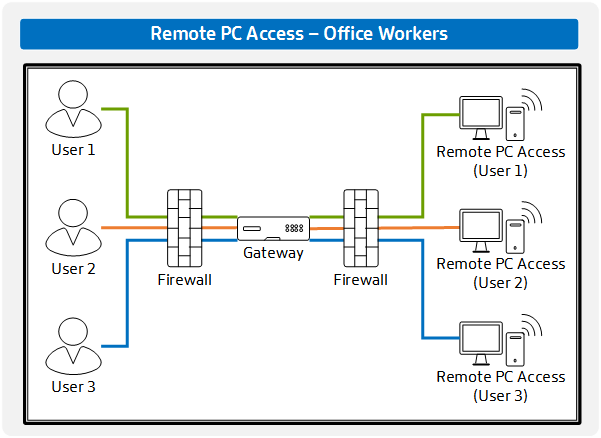

2.If you believe someone is accessing your computer remotely, disconnect the computer from the internet. Windows opens the System window of Control Panel. Power Management: By default, most computers.The service provides a number of tools to help with the pairing process, including a Viewer for the computer you want to use as your controller, a Host on remote computers for unattended access, a run-only Agent for spontaneous access, and an RU Server to route remote connections and access additional capabilities.Applies to: Configuration Manager (current branch)To turn on Remote Assistance on your computer, take the following steps: 1.
NTLM authentication is a weaker authentication protocol than Kerberos and is vulnerable to replay and impersonation.Do not enable Clipboard sharing in the remote control viewer.The Clipboard supports objects such as executable files and text and could be used by the user on the host computer during the remote control session to run a program on the originating computer.Do not enter passwords for privileged accounts when remotely administering a computer.Software that observes keyboard input could capture the password. Do not continue with the remote control session. Security best practiceWhen you connect to a remote computer, do not continue if NTLM instead of Kerberos authentication is used.When Configuration Manager detects that the remote control session is authenticated by using NTLM instead of Kerberos, you see a prompt that warns you that the identity of the remote computer cannot be verified. Security best practices for remote controlWhether you need to access your work computer from home, view a file from your home computer while traveling, or share your screen with friends or colleagues.Use the following security best practices when you manage client computers by using remote control. This topic contains security and privacy information for remote control in Configuration Manager. Some of the more obvious signs of active intrusion would be your mouse moving without your control, apps opening in front of your eyes, or files actively being.
This setting is for the computer, not for the logged-on user.Enable the Domain Windows Firewall profile.Enable the client setting Enable remote control on clients Firewall exception profiles and then select the Domain Windows Firewall for intranet computers.If you log off during a remote control session and log on as a different user, ensure that you log off before you disconnect the remote control session.If you do not log off in this scenario, the session remains open.Do not give users local administrator rights.When you give users local administrator rights, they might be able to take over your remote control session or compromise your credentials.Use either Group Policy or Configuration Manager to configure Remote Assistance settings, but not both.You can use Configuration Manager and Group Policy to make configuration changes to the Remote Assistance settings. If one user changes it, it can allow a different user on the same machine to be viewed remotely. Select the action Lock Remote Keyboard and Mouse in the ConfigMgr Remote Control window.Do not let users configure remote control settings in Software Center.Do not enable the client setting Users can change policy or notification settings in Software Center to help prevent users from being spied on. However, this detection might not occur immediately and does not occur if the remote control service is terminated. When accounts and passwords are required, the end user should enter them.Lock the keyboard and mouse during a remote control session.If Configuration Manager detects that the remote control connection is terminated, Configuration Manager automatically locks the keyboard and mouse so that a user cannot take control of the open remote control session.
Control Computer Remotely Update Is Forced
Choose one of these methods to configure your Remote Assistance settings.Enable the client setting Prompt user for Remote Control permission.Although there are ways around this client setting that prompts a user to confirm a remote control session, enable this setting to reduce the chance of users being spied upon while working on confidential tasks. Setting policy in both places might lead to inconsistent results. Configuration Manager changes the settings in the local security policy, which might not be overwritten unless the Group Policy update is forced.
The account of the connecting administrator is displayed in the remote control session, to help users identify who is connecting to their computer.By default, Configuration Manager grants the local Administrators group Remote Control permissions.Before you configure remote control, consider your privacy requirements. You can configure View Only access level so that nothing can be changed on the remote control, or Full Control. By default, remote control is not enabled.Although you can configure remote control to provide prominent notice and get consent from a user before a remote control session begins, it can also monitor users without their permission or awareness.


 0 kommentar(er)
0 kommentar(er)
